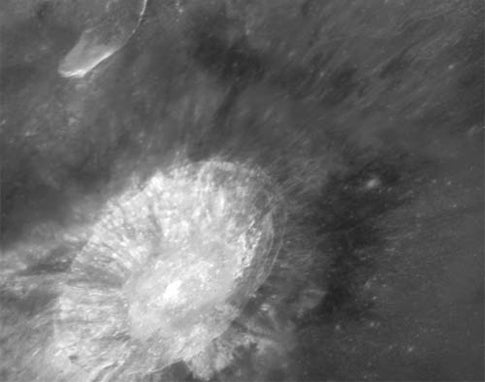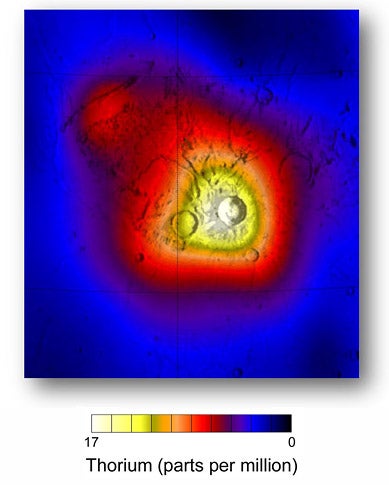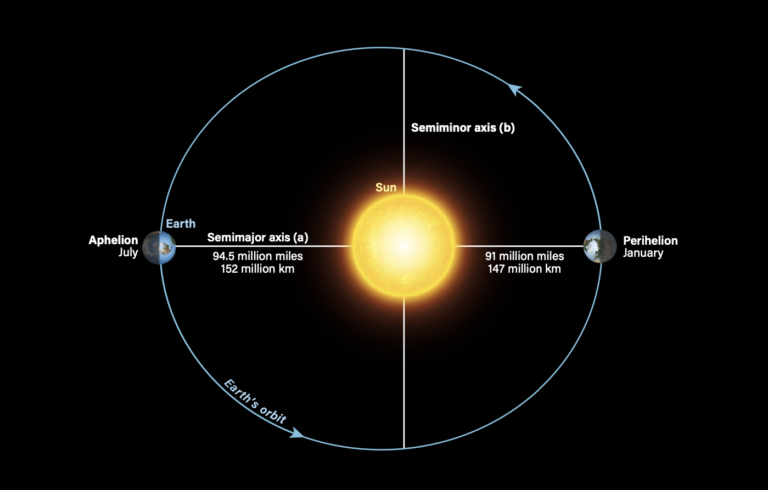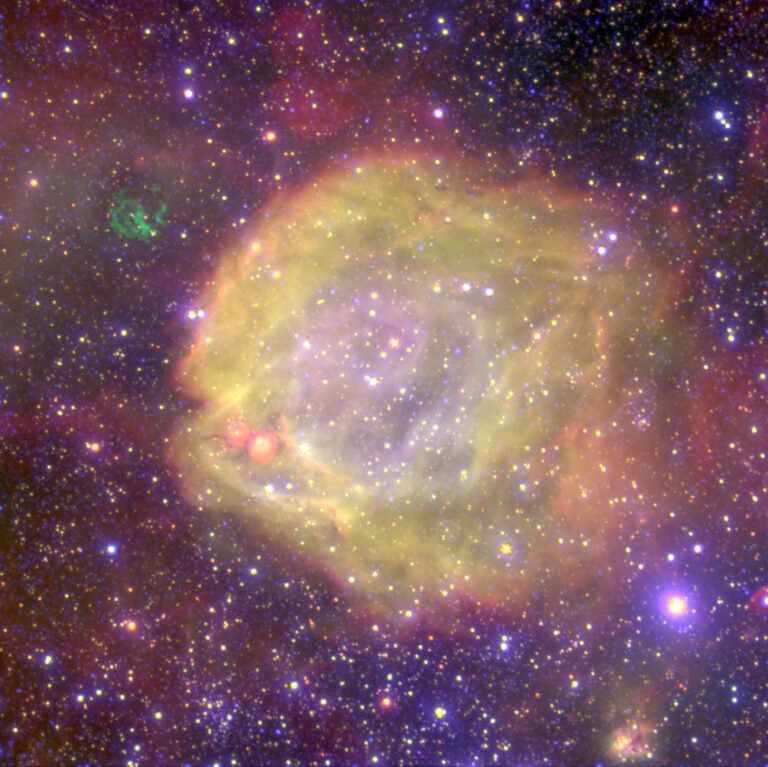NASA’s Lunar Prospector spacecraft mapped lunar elements while orbiting the Moon in 1998 and 1999. Now, a team of scientists led by David Lawrence at Los Alamos National Laboratory in New Mexico has used a software technique to nearly double the resolution of the mission’s thorium maps.
“Lunar Prospector data have revolutionized our understanding of the Moon from what were initially thought to be relatively simple global processes to much more asymmetric, complicated processes,” says Lawrence, acting director for the lab’s Center for Space Science and Exploration. Thorium is a radioactive component in a lunar material called KREEP — short for potassium (K), Rare-Earth Elements, and phosphorus (P). Orbiting instruments, such as Lunar Prospector’s gamma-ray spectrometer, can easily measure it.
“Lunar thorium abundances are a key indicator of various geologic processes, and, by measuring the global distribution of thorium, we gain insight into how the Moon was formed and how it has changed over time,” Lawrence notes. Before Lunar Prospector, scientists had concluded KREEP-like materials were some of the last to crystallize as the Moon cooled from a molten state to a solid one. Many thought KREEP may have existed globally, sandwiched between a light lunar crust and a heavy lunar mantle.
The team used a technique called spatial deconvolution to improve the 50-mile (80-kilometer) resolution of Lunar Prospector’s global thorium data. The method enhances the contrast, resolution, and information density of image data to the limit allowed by the data’s uncertainty. “It’s kind of like putting software glasses on the thorium image data to produce a sharper image,” Lawrence explains. The study, the first such analysis on a global set of orbital gamma-ray data, appeared in the February 7 Geophysical Research Letters.
“This new map will help to test models on the sources of these materials based on correlations with geologic features and units,” says Peter Schultz, a geologist at Brown University in Rhode Island. “Equally important is the recognition of lows in the thorium map related to impact craters that have punched into the feldspar-rich crust.” Examples include Copernicus and Pythagoras craters.
The improved view gives scientists a better look at several thorium features that were previously too blurry. A notable example is Aristarchus Crater (24° N, 47° W) and its environs. “With the old thorium data, we only saw a single blob covering the whole area,” Lawrence notes. But, with the improved analysis, the scientists see isolated thorium enhancements in mountains and basalt flows northwest of the crater. “This information is important in trying to sort out the geology of this complicated region,” he says.
Lunar Prospector’s alpha-particle instrument detected radon and other gases in the vicinity of Aristarchus, a region long connected with ground-based reports of transient glows. “My colleague, Stefanie Lawson, used alpha-particle data to show a link between thorium and radon at Aristarchus,” Lawrence notes. “By getting hints from these new data about how the thorium is distributed about Aristarchus, we may gain more information about possible gas-release events.”












